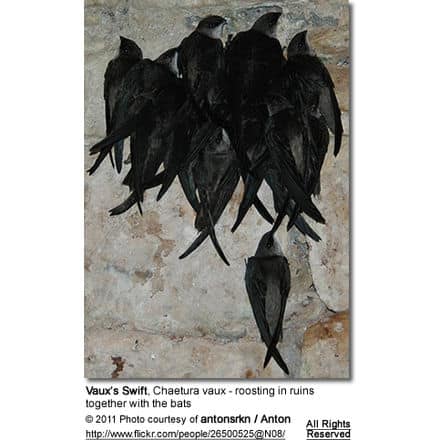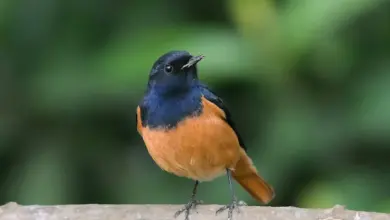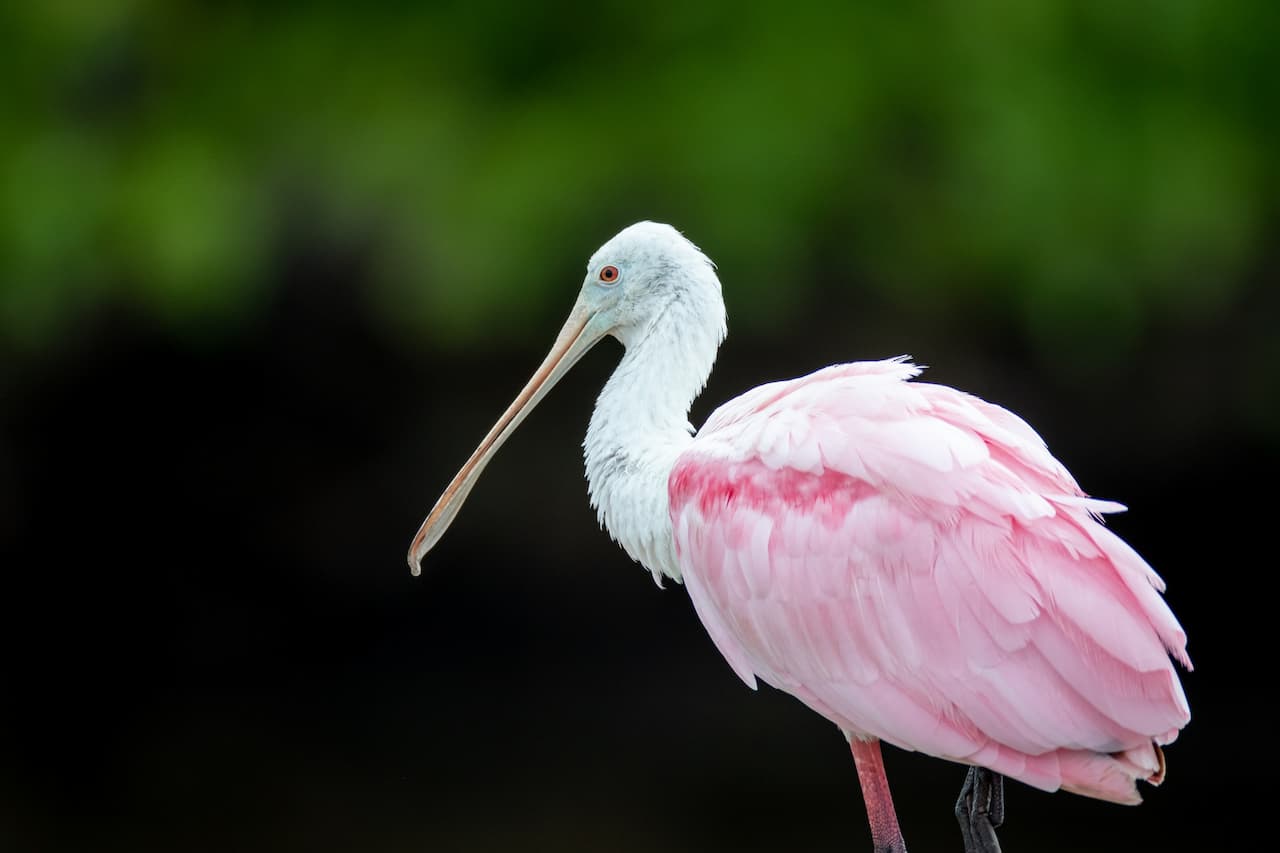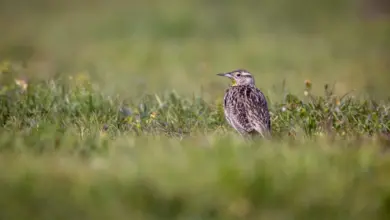Vaux’s Swifts
The Vaux’s Swifts, Chaetura vauxi, inhabits the highlands from southern Alaska to central California and from southern Mexico, the northern Yucatán Peninsula, to eastern Panama and northern Venezuela.
The United States’ populations are migratory, wintering from central Mexico south through the Central American breeding range. During the migration, large flocks of them circle their roosts at dusk, waiting until the first few birds dive into their roosting place.
This is a gregarious species, with flocks of 30 or more birds, and often with other swift species, such as White-collared, especially at weather fronts. It flies with a mixture of stiff wing-beats and unsteady glides.
These swifts are typically seen flying approximately 20 to 50 meters above the top of the canopy.
The resident breeding birds in the southern part of the range are sometimes considered a separate species, Dusky-backed Swift, Chaetura richmondi.
This species was named for the American scientist William Sansom Vaux.
Breeding / Nesting
Vaux’s Swift builds a cup nest of twigs and saliva on a vertical surface in a dark cavity, such as a tree hole, cliff crevice or attic. In the Yucatan, they may nest on the sides of limestone wells. (Sutton and Phelps 1948).
It breeds in the mountains and foothills, mainly above 700 m, and forages over forests and more open areas, including towns.
It lays three white eggs between March and July. The incubation starts after the entire clutch is laid. Both adults share parenting duties, including the incubation of the eggs. Cooperative parenting is possible, as there are reports of several adults feeding a clutch.
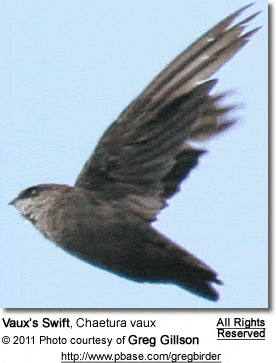
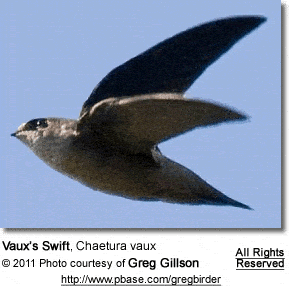
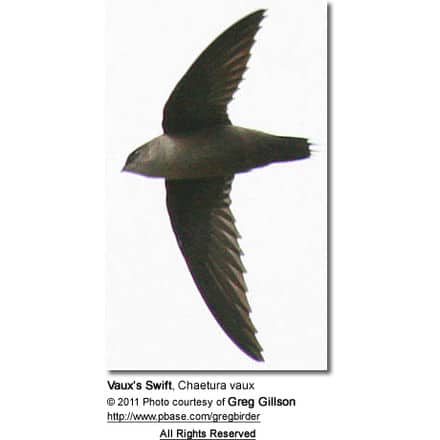
Description
This is a small swift, even compared to other Chaetura species, at 10.7 to 11.2 cm long and weighing 18 g. In fact, it is the smallest swift in North America. Their body is designed for speed – with an aerodynamic shape, long, pointed wings, and a small body. They weigh between 15 to 22 g (0.53 to 0.77)
The northern populations are slightly larger at 11.5 cm, probably according to the Bergmann’s Rule, and/or migration requirements.
It has a cigar-shaped body, crescentic wings and a short bluntly squared-off tail. The head, upperparts and wings are dusky black, and the underparts, rump and tail coverts are greyish brown. The throat is paler grey, becoming whitish in northern birds.
They have short legs, small feet; and a short and stout bill.
Males and females look alike, but juveniles have dusky bases to the throat feathers.
Similar Species:
- Black and White-throated Swifts have forked tails and different patterning below.Chimney Swifts are larger, have longer wings, a darker rump and throat, and different voice..
Diet / Feeding
Vaux’s Swift feeds on various insects, such as wasps, bees, ants, beetles, termites, flies, hoverflies, planthoppers, aphids, spindlebugs, lanternflies, moths, mayflies and spiders.
During the breeding season, they feed both in flocks and alone, often capturing their prey mid-flight. They also forage along streams.
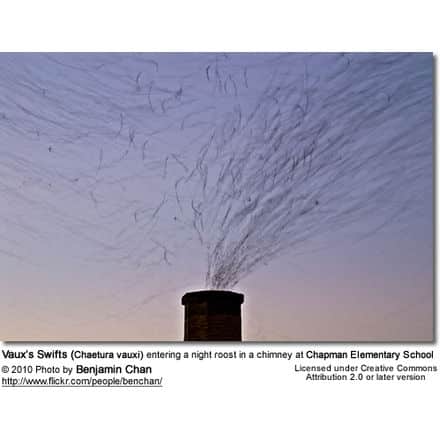
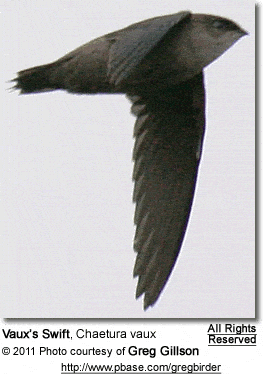
Calls / Vocalizations
This swift has more varied calls than others in the genus, with a mixture of chattering, buzzes, squeaks, and chips.
Status
Vaux’s Swifts are in decline due to the destruction and loss of older forests – which is their preferred habitat, as they contain plenty of hollow trees for nesting and roosting. Additionally, chimneys are increasingly less available, due to the increasing use of insulated pipes instead of brick chimneys.
Swift Information … Swift Species Index … Swift Species Photo Gallery
